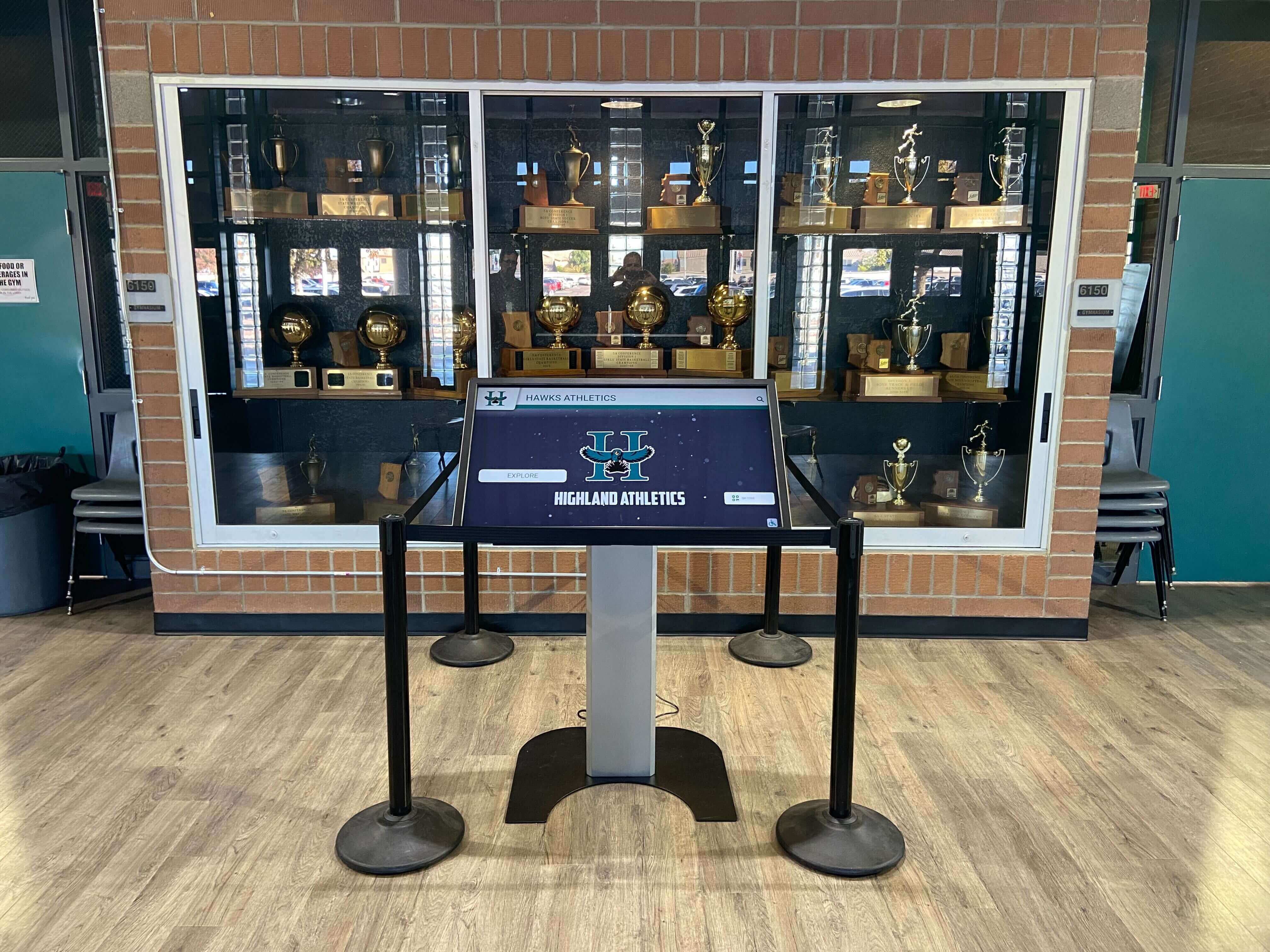School clubs represent the heart of student engagement beyond the classroom, providing spaces where students explore passions, develop leadership skills, build friendships, and create meaningful high school memories. Yet despite their importance, many schools struggle to effectively showcase the diverse clubs they offer, resulting in low awareness, inconsistent membership, and clubs that operate in relative obscurity while potential members remain unaware of opportunities perfectly aligned with their interests.
Traditional club promotion methods—printed flyers that quickly disappear, brief announcements during morning rush, static bulletin boards in forgotten hallways, and rushed club fairs that reach only students who happen to attend—fail to create the sustained visibility needed to build thriving club cultures. Students miss opportunities to discover clubs matching their interests, clubs struggle to attract sufficient membership to remain viable, and schools fail to leverage clubs as the powerful engagement and retention tools they represent.
Modern digital recognition solutions transform how schools highlight and promote clubs by creating dynamic, engaging platforms that showcase club activities, celebrate achievements, attract new members, and build pride among current participants. From interactive touchscreen displays featuring comprehensive club profiles to social media integration amplifying club visibility, strategic club recognition leverages technology to solve fundamental promotion challenges while creating club cultures that genuinely thrive.
This comprehensive guide explores how schools effectively use digital recognition to enhance club promotion, examining proven strategies for showcasing clubs, celebrating achievements, recruiting members, and building sustainable club communities that enrich the entire school experience.
Understanding the Critical Role of Club Recognition
Before implementing specific club promotion strategies, understanding why club visibility matters helps schools prioritize resources and design approaches that generate meaningful impact.
The Benefits of Strong Club Programs
Active, well-promoted club programs deliver substantial benefits to students, schools, and entire communities:
Student Development Outcomes
Students who participate in clubs demonstrate measurably different outcomes compared to non-participants. Research consistently shows that club involvement correlates with improved academic performance as students develop time management and organizational skills, enhanced social capital through expanded peer networks beyond classes, leadership skill development through officer roles and project management, identity exploration as students try activities and discover genuine interests, college application strength through demonstrated commitment and achievement, and career pathway discovery introducing students to potential professional interests.
School Culture Benefits
Beyond individual student impact, robust club programs strengthen entire school communities. Thriving club cultures create increased student engagement and school connection, reduced behavioral issues as students find positive outlets and belonging, improved attendance rates among club participants, enhanced school pride through visible student activity and achievement, stronger retention as students develop reasons to remain enrolled, and positive school reputation attracting prospective students and families.
The Underutilization Problem
Despite these benefits, many schools dramatically underutilize clubs as engagement strategies. Common challenges include limited awareness as students simply don’t know what clubs exist, perception problems when students view clubs as uncool or irrelevant, access barriers including scheduling conflicts or transportation challenges, inconsistent quality across clubs creating negative experiences, and lack of visible celebration making club participation feel invisible and undervalued.
Effective club recognition directly addresses these challenges by making clubs visible, valued, and appealing to broad student populations rather than narrow enthusiast groups.
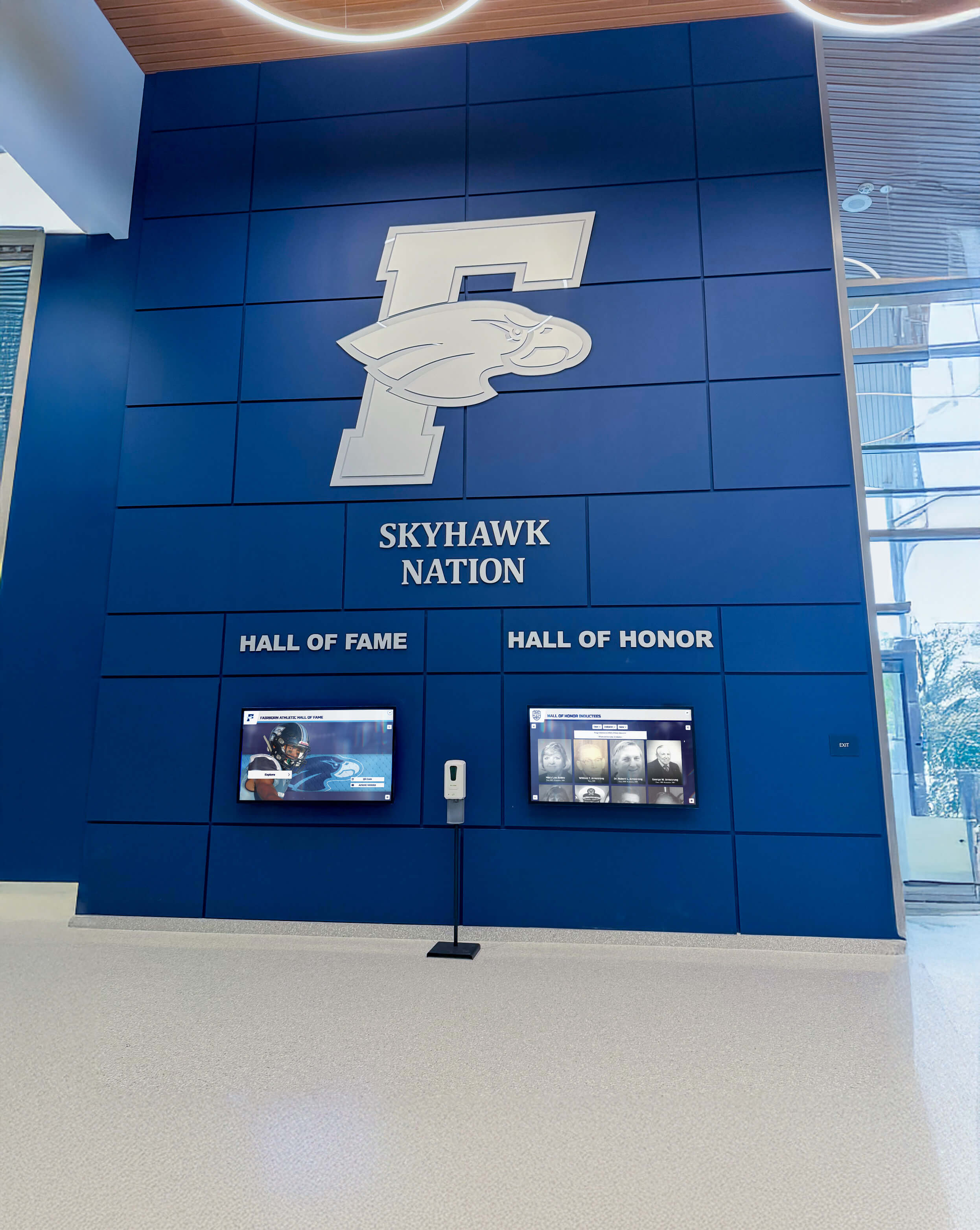
How Recognition Drives Club Participation
Strategic club recognition influences student behavior through multiple psychological and social mechanisms:
Awareness Building
Students cannot join clubs they don’t know exist. Recognition creates awareness through repeated exposure to club information in high-traffic locations, visual showcasing demonstrating what clubs actually do, achievement celebration showing clubs are active rather than dormant, member profiles personalizing clubs through relatable student faces, and curiosity generation prompting students to investigate further after seeing interesting content.
Social Proof and Validation
Humans naturally look to peers when deciding whether activities are worthwhile. Club recognition provides social proof through visible membership numbers demonstrating participation levels, achievement celebration signaling success and legitimacy, peer testimonials from students similar to prospective members, photographic evidence showing diverse students enjoying activities, and institutional endorsement through resource investment in recognition infrastructure.
Identity and Belonging Signals
Students seek communities where they feel they belong and can express authentic identities. Effective recognition helps clubs communicate identity dimensions through visual representation of club culture and members, activity documentation showing what participation actually involves, value statements articulating what clubs stand for, achievement celebration demonstrating what success looks like, and inclusivity messaging welcoming diverse students to participate.
When schools strategically recognize clubs, participation shifts from something only certain students do to expected participation embedded in school culture and identity.
Strategic Approaches to Club Recognition and Promotion
Effective club recognition requires systematic approaches that create sustained visibility, celebrate achievements, and build cultures where club participation feels natural and valued.
Comprehensive Club Showcase Displays
Central recognition displays serve as ongoing club promotion platforms that students, staff, and visitors regularly encounter.
Interactive Digital Club Directories
Modern touchscreen displays transform traditional club lists into engaging exploration experiences. Comprehensive digital directories include searchable databases allowing students to find clubs by interest, activity type, or meeting schedule; detailed club profiles featuring descriptions, meeting information, officer contacts, and membership requirements; photo galleries showcasing club activities and events; achievement documentation celebrating awards, competitions, and accomplishments; video content including club introductions and member testimonials; and contact functionality enabling interested students to connect with club leaders directly.
Solutions like interactive boards for student achievement extend beyond traditional recognition to become comprehensive club promotion platforms that students actively use throughout school years.
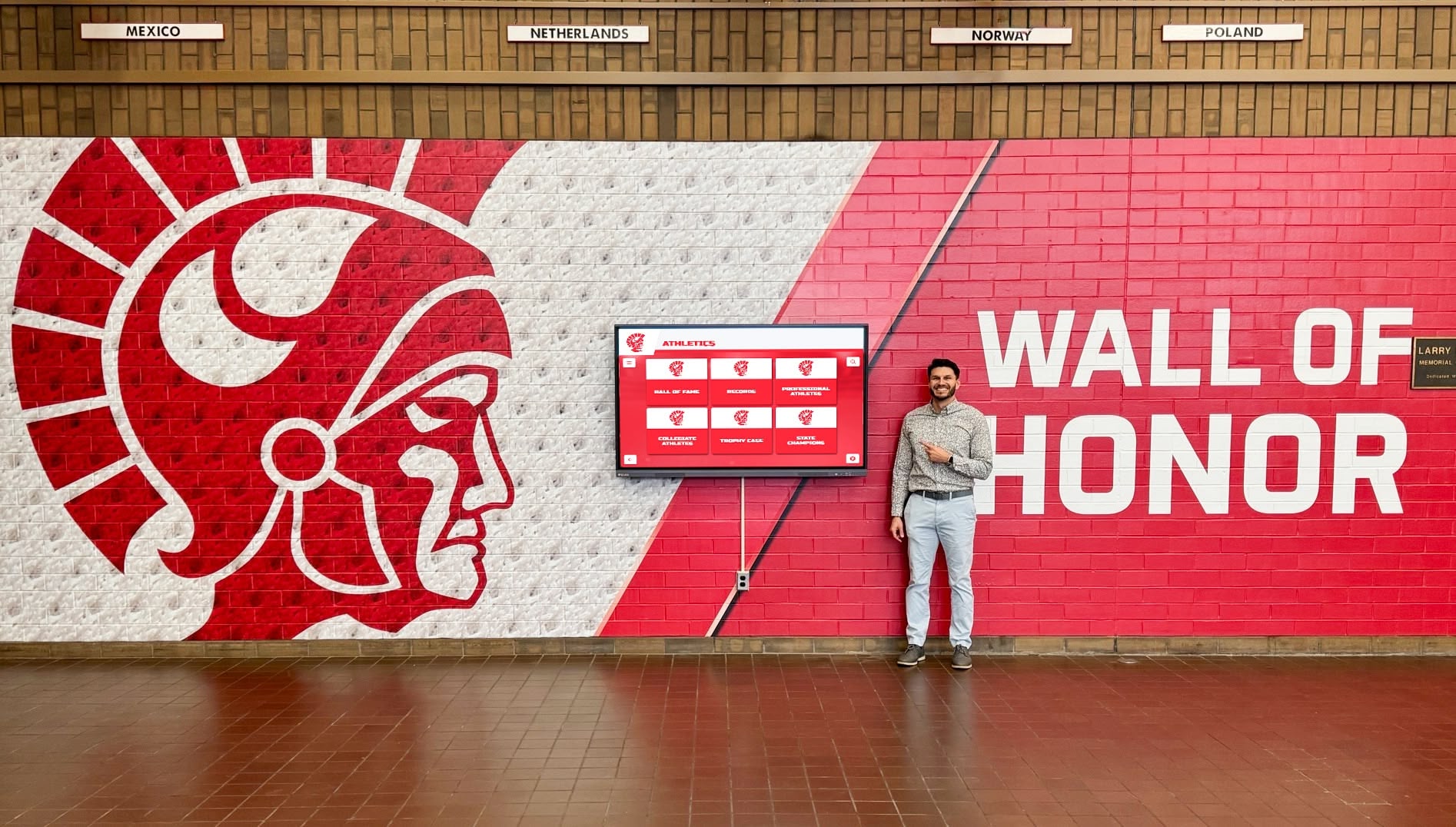
Strategic Display Placement
Location determines whether recognition reaches target audiences. Position club showcases in main entrance lobbies where all students pass daily, cafeteria areas with natural dwell time during lunch periods, guidance office lobbies where students consider involvement opportunities, library media centers supporting academic clubs, and common areas where students naturally gather between classes.
Content Development Best Practices
Technology enables recognition, but compelling content drives engagement. Develop club profiles including professional photography showing clubs in action rather than static posed shots, authentic member testimonials in students’ own voices, clear meeting logistics removing barriers to first attendance, officer introductions personalizing club leadership, achievement highlights celebrating recent accomplishments, and explicit welcome statements inviting new members.
Targeted Club Recruitment Campaigns
Strategic campaigns at key points throughout school years maximize recruitment effectiveness by reaching students when they’re most receptive.
Beginning-of-Year Club Drives
The start of school years represents prime recruitment opportunities when students seek new activities and connections. Effective launch campaigns include comprehensive club showcases featuring all available clubs, club fair events allowing face-to-face interaction with leaders, welcome week activities providing low-pressure sampling opportunities, orientation integration introducing clubs to new students systematically, and digital campaigns using social media recognition to reach students across platforms.
Mid-Year Recruitment Windows
Student interests evolve throughout years, creating ongoing recruitment opportunities. Mid-year campaigns leverage new interests emerging from curriculum exposure, activity sampling opportunities during club weeks or special events, achievement celebration creating curiosity among non-members, leadership transition periods when clubs seek new officers, and targeted outreach to students whose early-year activities haven’t connected.
Grade-Level Specific Campaigns
Different grades respond to different recruitment messages and approaches. Freshman campaigns emphasize exploration, trying new things, and making friends beyond middle school connections. Sophomore campaigns focus on finding passions and building toward leadership. Junior campaigns highlight college application benefits and leadership development. Senior campaigns create urgency around final opportunities to participate while emphasizing legacy and contribution.

Achievement Celebration and Recognition
Celebrating club accomplishments serves dual purposes: honoring current members while attracting prospective participants who see active, successful communities.
Competition and Event Recognition
Competitive achievements and major events warrant prominent celebration. Recognition approaches include competition result announcements with context and significance explanation, championship celebration for clubs winning tournaments or competitions, conference presentation recognition when clubs present at academic or professional events, service project completion celebrating community contribution and impact, performance event highlights for clubs presenting to audiences, and fundraising milestone recognition celebrating financial targets achieved for trips or causes.
Schools implementing student awards recognition programs ensure club achievements receive celebration comparable to athletic and academic honors.
Member Milestone Recognition
Individual member achievements within clubs deserve acknowledgment that motivates continued participation. Recognize tenure milestones celebrating years of involvement, leadership transition announcements honoring new officers, skill certifications earned through club participation, project completion highlighting individual contributions, mentorship recognition acknowledging experienced members supporting newcomers, and scholarship awards earned through club-related achievements.
Showcasing Club Impact
Demonstrating real-world impact elevates clubs from recreational activities to meaningful contributions. Document community service hours and populations served, fundraising totals for charitable causes, environmental impact from sustainability clubs, peer tutoring outcomes from academic clubs, cultural events enriching school communities, and advocacy achievements from clubs addressing social issues.
When students see that clubs accomplish meaningful things rather than simply meeting for meetings’ sake, participation becomes more compelling and purposeful.
Leveraging Technology for Club Promotion
Modern technology enables club recognition and promotion approaches that transcend traditional limitations while meeting students through platforms they naturally use.
Interactive Digital Recognition Platforms
Purpose-built digital recognition systems provide comprehensive club promotion capabilities that generic approaches cannot match.
Core Platform Capabilities
Effective digital recognition platforms offer intuitive content management allowing club advisors to update profiles without technical expertise, flexible templates maintaining visual consistency while accommodating club uniqueness, search and filter functionality helping students discover clubs matching interests, multimedia integration supporting photos, videos, and rich content, mobile accessibility extending reach beyond physical installations, calendar integration showing upcoming meetings and events, and analytics demonstrating which clubs receive most interest to inform resource allocation.
Digital recognition displays provide unlimited capacity to showcase all clubs regardless of size or prestige, solving the visibility problem that plagues traditional recognition limiting space to only major clubs.
Integration with School Systems
Maximum efficiency comes from connecting recognition systems with existing school infrastructure. Integration opportunities include student information system connections automating membership rosters, attendance tracking correlating club participation with academic and behavioral outcomes, scheduling systems displaying meeting times and locations, permission management streamlining student access to appropriate content, and announcement systems ensuring club information appears across school communication channels.
Social Media Amplification
Extending club recognition beyond physical displays multiplies reach and engagement. Digital platforms enable automatic social media posting of club updates and achievements, hashtag campaigns organizing club-related content, tagging capabilities connecting club posts to member profiles, sharing functionality enabling club members to amplify content through personal networks, and content calendars maintaining consistent club visibility throughout school years.
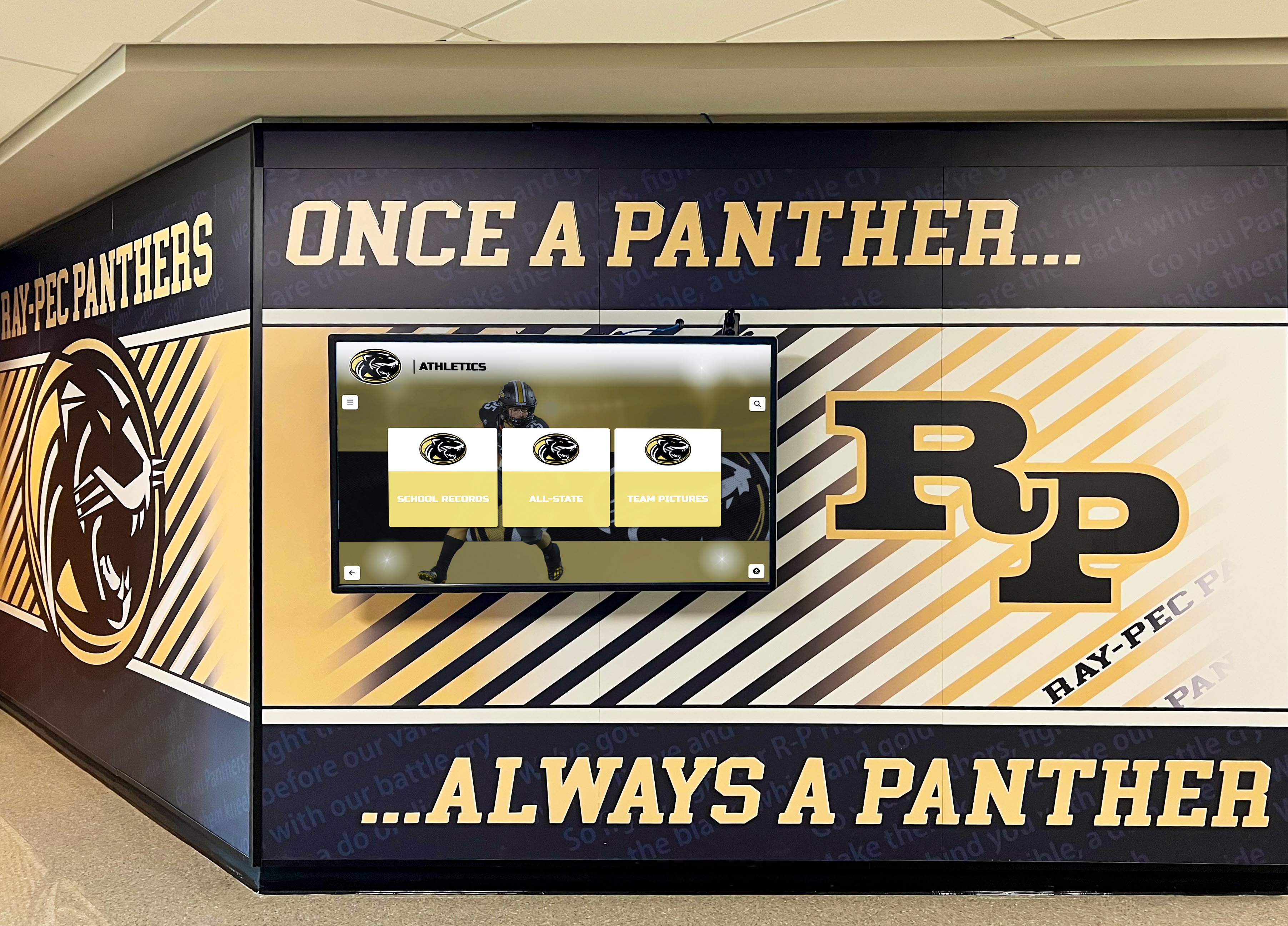
Virtual Club Showcase Platforms
Online platforms complement physical displays by reaching students, families, and community members regardless of physical school presence.
Dedicated Club Websites and Portals
Comprehensive online club presence serves multiple audiences and purposes. Effective club websites include public-facing sections showcasing clubs to prospective students and families, member portals providing resources and communication for active participants, alumni sections maintaining connection with former members, application or signup functionality streamlining the joining process, resource libraries storing meeting agendas, project files, and historical materials, and communication tools facilitating announcements and discussion.
Schools creating online hall of fame systems can extend platforms to include comprehensive club showcases reaching audiences beyond campus boundaries.
Mobile-First Club Engagement
Meeting students where they naturally consume information requires mobile-optimized experiences. Mobile club platforms provide push notifications about upcoming meetings and events, personalized recommendations suggesting clubs based on expressed interests, quick joining functionality removing friction from signup process, event check-in streamlining attendance tracking, and photo sharing enabling members to contribute documentation from activities.
Virtual Tours and Preview Content
Reducing uncertainty about what club participation involves increases willingness to try. Virtual preview content includes video tours showing typical meeting activities, member interview series explaining what participation is actually like, project showcases demonstrating what clubs create or accomplish, event recaps allowing non-members to see what they missed, and day-in-the-life features following club members through activities.
When students can virtually experience clubs before committing, perceived risk decreases and trial participation increases.
Building Sustainable Club Recognition Systems
Effective club recognition requires ongoing commitment and systematic approaches rather than one-time initiatives that fade as initial enthusiasm wanes.
Distributed Responsibility Models
Sustainable recognition distributes workload across multiple stakeholders rather than depending on single individuals whose departure collapses entire systems.
Club Advisor Responsibilities
Establish clear expectations that club advisors maintain basic club information including updated meeting schedules and locations, current officer contact information, achievement and event announcements, photo documentation of activities, and annual profile updates ensuring accuracy as clubs evolve.
Student Leadership Involvement
Empower club officers to manage recognition content, building leadership skills while ensuring authentic student voice. Student responsibilities can include creating promotional content for recruitment, documenting meetings and events through photos and videos, managing social media presence, developing member testimonials and stories, and tracking achievements worthy of recognition.
Schools fostering student engagement through leadership responsibility create more authentic and compelling club recognition than adult-managed approaches.
Central Coordination Support
While distributing creation responsibilities, maintain central coordination ensuring quality and consistency. Central staff responsibilities include providing templates and guidelines, offering training and technical support, reviewing content for appropriateness and quality, managing platform administration and permissions, aggregating data and generating reports, and recognizing clubs and advisors who excel at documentation and promotion.
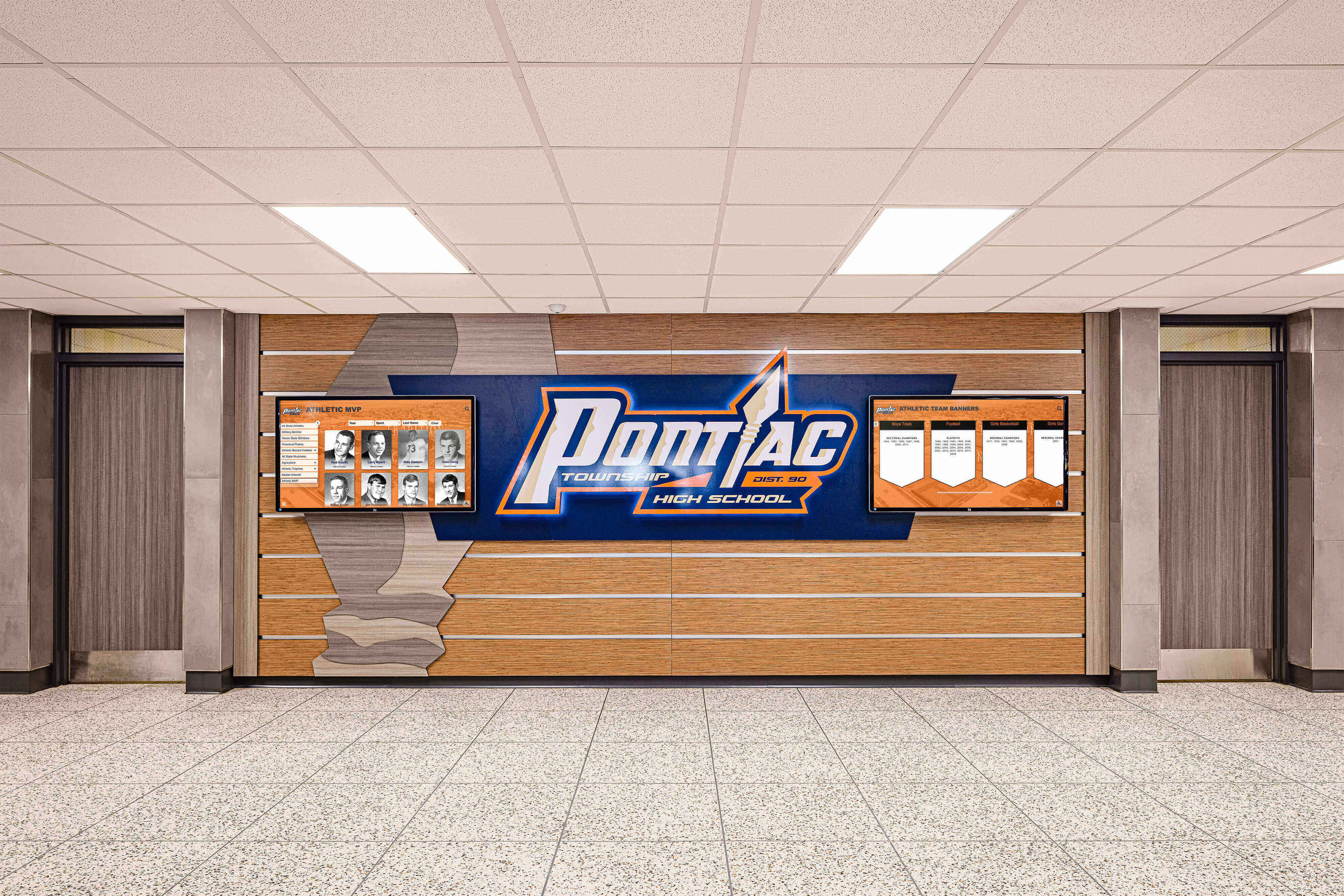
Content Development Workflows
Systematic content processes ensure recognition remains current and compelling rather than stagnating with outdated information.
Regular Update Cycles
Establish predictable rhythms for content updates. Monthly content priorities include meeting schedule confirmations, upcoming event announcements, recent achievement celebration, new member welcomes, and officer spotlights. Quarterly priorities encompass comprehensive profile reviews, achievement summaries, membership drive campaigns, planning spotlight features, and analysis of engagement metrics. Annual priorities focus on complete profile refreshes, year-end achievement celebration, transition recognition for graduating seniors, recruitment content for incoming students, and strategic planning based on annual data.
Event-Based Content Triggers
Certain club activities automatically trigger recognition content. Systematic documentation includes pre-event promotion building attendance and awareness, during-event photography and social media providing real-time visibility, post-event recaps celebrating success and sharing outcomes, achievement announcements honoring competition results or completions, and member milestones recognizing leadership transitions or tenure achievements.
Quality Standards and Guidelines
Maintaining recognition credibility requires consistent quality. Establish standards for photography requiring good lighting, composition, and technical quality; writing demanding clear, engaging, grammatically correct content; accuracy ensuring all information remains current and correct; inclusivity showing diverse club membership and welcoming tone; and appropriateness maintaining professional standards in all content.
Assessment and Continuous Improvement
Measuring recognition effectiveness enables data-driven improvement rather than assuming approaches work without evidence.
Quantitative Metrics
Objective data reveals recognition reach and club participation patterns. Track total students involved in clubs and percentage of student body participating, new member recruitment by semester and club, retention rates showing continuing participation semester-to-semester, event attendance trends over time, recognition platform engagement including views, searches, and interactions, and demographic participation ensuring equitable access across student populations.
Qualitative Feedback
Numbers alone don’t reveal student experiences and perceptions. Gather insights through student surveys about club awareness and perception, focus groups with participants and non-participants exploring barriers and motivations, club advisor feedback about recruitment and retention challenges, exit interviews with students leaving clubs to understand attrition, and parent perspectives on communication effectiveness and club value.
Benchmark Comparison
Context helps interpret whether metrics indicate success or concern. Compare current participation to historical baseline identifying trends over time, similar school comparison revealing relative performance, national participation data providing broader context, and goal attainment assessing progress toward established targets.
Schools implementing comprehensive recognition strategies find that systematic assessment and improvement cycles prevent stagnation while ensuring club promotion evolves with student needs and interests.
Special Considerations for Different Club Types
While general recognition principles apply universally, different club categories benefit from tailored approaches acknowledging their unique characteristics and needs.
Academic and Competition Clubs
Clubs focused on intellectual pursuits and academic competition require recognition emphasizing achievement, rigor, and learning outcomes.
Competition Achievement Emphasis
Academic clubs often participate in external competitions providing objective validation. Prominent recognition includes tournament results and rankings, individual and team awards earned, qualification progression advancing through competition levels, scholarship earnings resulting from excellence, and publication achievements for research or creative clubs.
Skill Development Showcase
Beyond competition, highlight competencies students develop. Documentation includes technical skills acquired through club participation, problem-solving approaches clubs employ, research methodologies students learn, presentation skills developed through competition, and college/career connections linking club experience to future opportunities.
College Application Relevance
Many students join academic clubs partly for college application benefits. Recognition content should include specific college admission advantages, scholarship opportunities related to club areas, leadership development preparation for college, portfolio building through club projects and achievements, and alumni success stories showing college and career outcomes.
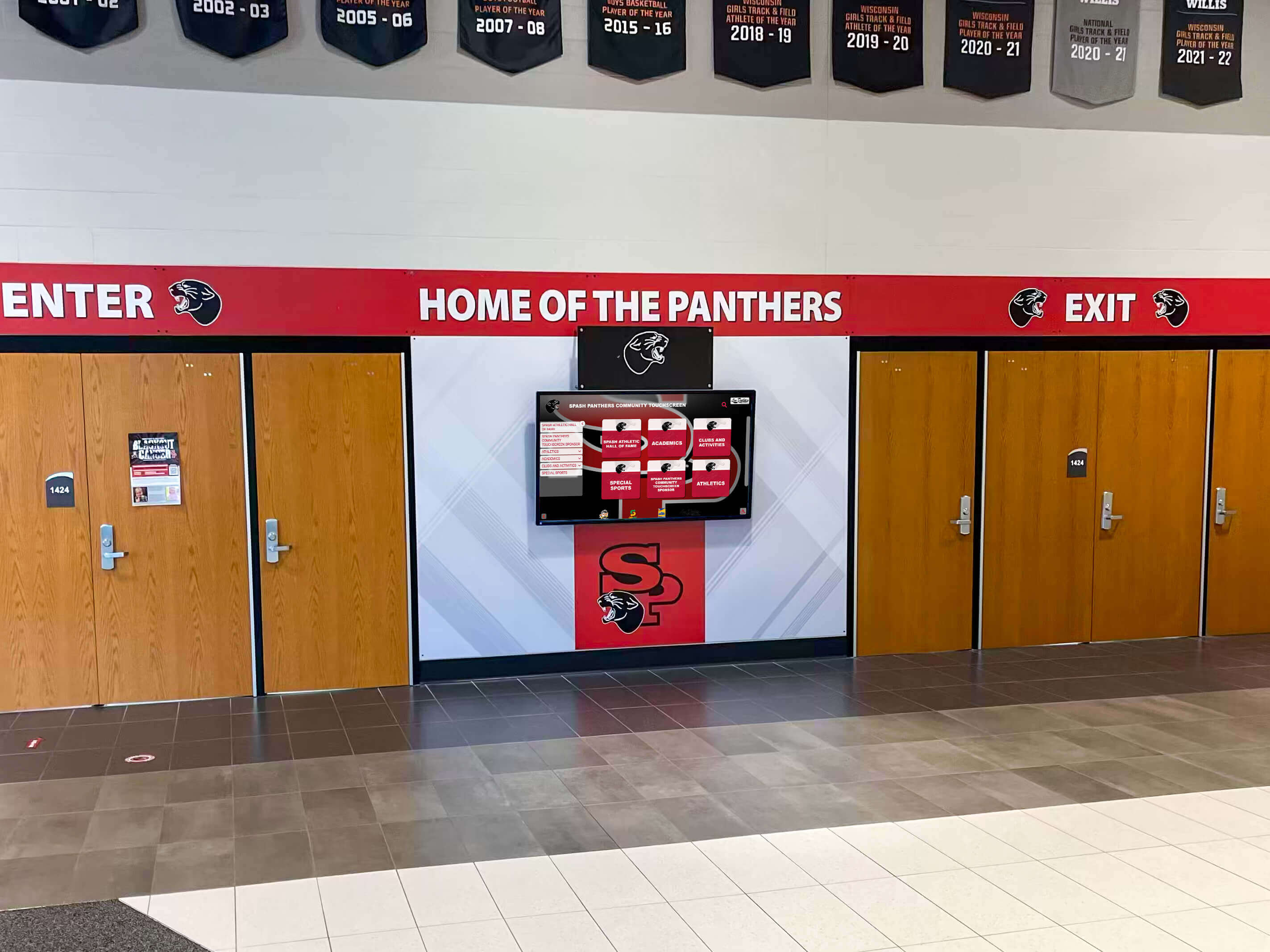
Service and Advocacy Clubs
Clubs dedicated to community service or social advocacy require recognition emphasizing impact, values, and contribution beyond individual benefit.
Impact Documentation
Service clubs must demonstrate real-world effects of their work. Recognition includes quantified outcomes like volunteer hours contributed, people served, or funds raised; community testimonials from organizations benefiting from service; before-and-after documentation showing tangible change; partnership recognition acknowledging collaborating organizations; and long-term tracking demonstrating sustained rather than one-time impact.
Value and Mission Communication
Help prospective members understand what clubs stand for and work toward. Clear communication includes mission statements articulating club purpose, cause education explaining issues clubs address, action opportunities showing how members contribute, inclusivity messaging welcoming diverse perspectives and backgrounds, and member reflections sharing personal meaning students find through service.
Social Issue Education
Advocacy clubs serve educational roles beyond their membership. Recognition platforms provide issue background and context, current event connections relating club work to news and trends, action resources enabling broader community engagement, expert partnerships highlighting collaboration with issue organizations, and student voice amplification elevating youth perspective on social challenges.
Arts, Performance, and Creative Clubs
Creative clubs require recognition showcasing artistic output, performance opportunities, and the aesthetic dimensions that words alone cannot capture.
Portfolio and Work Showcase
Visual and performing arts demand visual documentation. Recognition platforms include image galleries featuring student artwork or performances, video performances allowing audiences to experience club output, audio recordings for musical clubs, creative writing samples with proper attribution, design project showcases, and exhibition or performance announcements promoting upcoming opportunities to experience club work.
Creative Process Documentation
Beyond finished products, show the journey of creation. Behind-the-scenes content includes rehearsal or studio documentation, technique explanation describing artistic approaches, creative inspiration sharing what drives club work, iteration showcase showing how work develops over time, and mentorship highlighting experienced members supporting newcomers.
Performance Opportunity Promotion
Arts clubs need audiences for their work. Recognition platforms should include event calendars with performance schedules, ticket information and purchasing links, preview content generating interest before events, post-performance recaps celebrating success, and audience testimonials providing social proof of quality and value.
Cultural and Identity-Based Clubs
Clubs organized around cultural heritage, identity, or affinity require recognition that honors authentic experience while welcoming broad participation.
Cultural Education and Celebration
Help broader school communities understand and appreciate cultures clubs represent. Educational content includes cultural background and history, tradition explanation and significance, holiday and observance education, language and communication elements, art and aesthetic traditions, and culinary culture when clubs share traditional foods.
Authentic Representation
Ensure recognition reflects genuine club culture rather than stereotypes or outsider perspectives. Prioritize student voice and experience, leadership from community members, diverse within-group representation acknowledging variation within cultures, consultant or advisor input from cultural experts, and sensitivity review preventing appropriation or misrepresentation.
Inclusive Participation Balance
Navigate the balance between cultural specificity and welcoming allies and interested outsiders. Clear communication about who can join and participate, explanation of ally roles and appropriate boundaries, mentorship pairing cultural insiders with learning newcomers, education programs building understanding before participation, and celebration of cultural exchange and learning across difference.
Overcoming Common Club Recognition Challenges
Understanding predictable obstacles helps schools proactively address them rather than abandoning recognition efforts when difficulties inevitably emerge.
Limited Time and Resources
Club recognition competes with countless other school priorities for scarce time and funding.
Efficiency Through Technology
Purpose-built platforms dramatically reduce recognition workload compared to manual approaches. Digital solutions provide templates and automation reducing custom work, batch update capabilities changing information across multiple clubs simultaneously, scheduled publishing allowing content preparation during available time, mobile access enabling updates without computer requirements, and content reuse through template libraries and historical examples.
Phased Implementation
Schools need not implement comprehensive recognition immediately. Start with highest-impact components including basic club directory with contact information, major achievement celebration for championships and significant accomplishments, targeted recruitment campaigns at beginning of year and semester starts, and systematic expansion adding capabilities as capacity allows.
Student Capacity Leverage
Students themselves represent tremendous untapped capacity. Engage student photographers and videographers documenting clubs, student writers creating profiles and stories, student designers developing visual content, student social media ambassadors amplifying recognition across platforms, and student leadership teaching peers to manage recognition content.
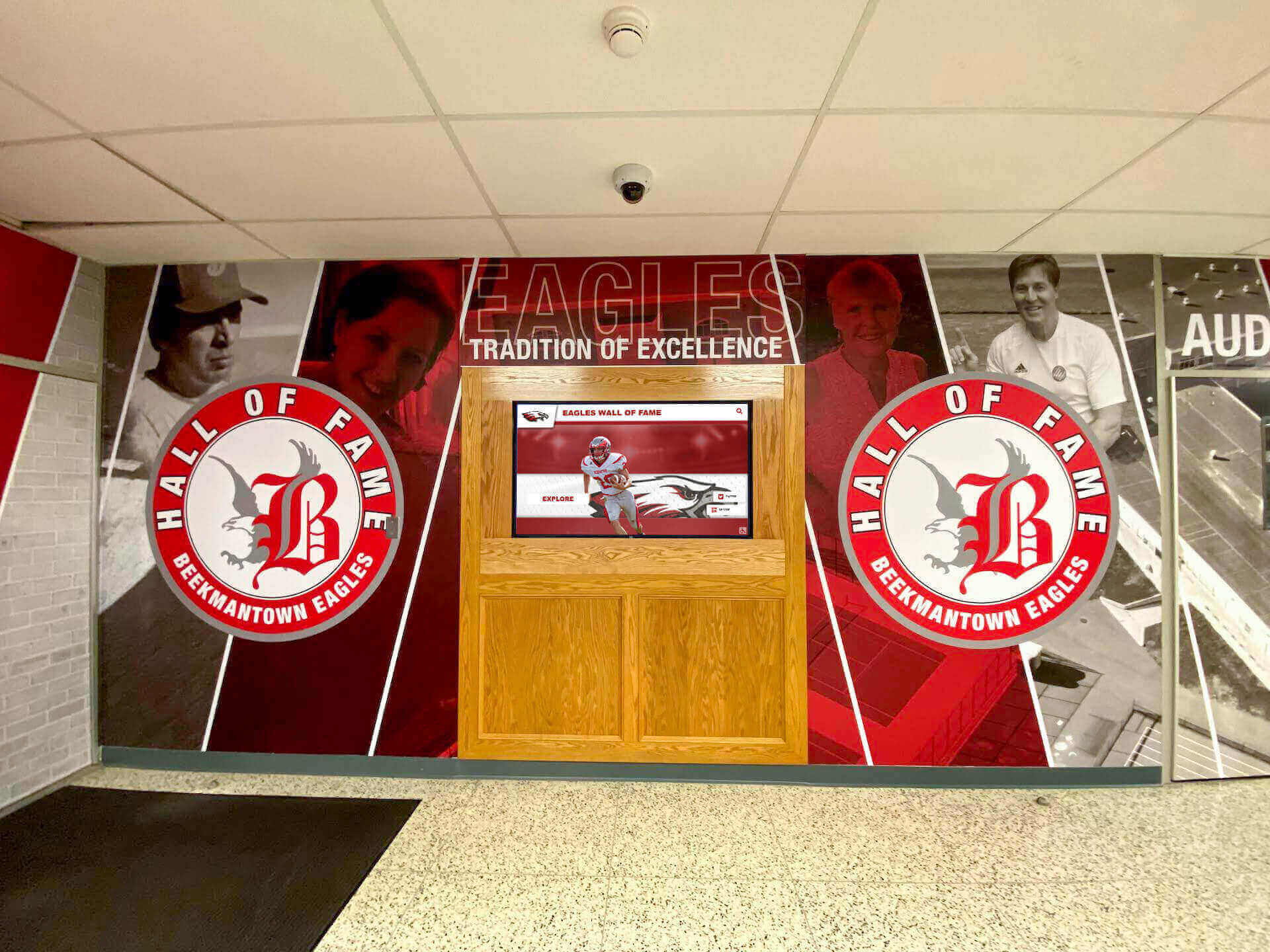
Inconsistent Club Quality and Activity
Not all clubs maintain consistent activity levels or quality experiences, creating recognition challenges when showcasing inactive or problematic clubs.
Minimum Activity Standards
Establish clear expectations defining active clubs worthy of promotion. Standards might include minimum meeting frequency, minimum membership thresholds, advisor engagement requirements, activity or achievement demonstration, and annual reporting obligations.
Tiered Recognition Approaches
Different clubs warrant different recognition levels based on activity and achievement. Recognition tiers might include featured clubs highlighted prominently based on recent achievement or model practices, standard clubs receiving baseline directory presence and routine recognition, emerging clubs newly formed and building membership, and inactive clubs on hiatus with minimal visibility until reactivation.
Quality Improvement Support
Rather than simply excluding underperforming clubs, provide support improving quality. Resources include advisor training and professional development, student leadership development programs, activity idea resources and curriculum support, partnership connections with community organizations, and recognition of improvement celebrating clubs that strengthen operations.
Equity and Access Concerns
Club participation patterns often reflect and perpetuate broader educational inequities requiring proactive intervention.
Barrier Identification and Removal
Systematically identify and address obstacles limiting participation. Common barriers include transportation challenges for after-school activities, scheduling conflicts with work or family obligations, fee requirements prohibiting low-income students, prerequisite skills or knowledge creating entry barriers, social dynamics making clubs feel unwelcoming, and awareness gaps leaving students unaware of opportunities.
Targeted Outreach and Recruitment
Proactive engagement increases participation among underrepresented populations. Strategies include explicit welcome messaging to specific student groups, translated materials for multilingual families, partnership with counselors serving diverse populations, financial assistance for fee-based clubs, alternate timing offering lunch or before-school options, and mentor programs pairing experienced members with nervous newcomers.
Demographic Monitoring
Regular data review reveals participation patterns requiring intervention. Track participation across dimensions including race and ethnicity, gender identity, socioeconomic status indicators, English learner status, special education status, and grade level ensuring all populations access opportunities.
Case Applications: Club Recognition Across School Types
While club recognition principles apply broadly, implementation varies based on school size, resources, and student population characteristics.
Large Comprehensive High Schools
Schools with hundreds of clubs face unique challenges organizing recognition at scale.
Large school strategies include hierarchical organization systems grouping clubs by category for easier navigation, search functionality becoming essential rather than optional, featured club rotations ensuring all clubs gain visibility over time, club fair integration connecting physical and digital recognition, and athletic and arts parity ensuring non-athletic clubs receive comparable recognition to sports programs.
Small Schools with Limited Club Options
Schools offering fewer clubs need recognition emphasizing depth over breadth while encouraging new club formation.
Small school approaches include detailed club profiles showcasing everything clubs offer, member testimony emphasizing personal experience and community, achievement amplification celebrating every success prominently, new club incubation supporting student initiative to form clubs matching interests, and multi-school collaboration partnering with other small schools for joint clubs or activities.
Career and Technical Schools
CTE-focused schools benefit from connecting clubs to career pathways and professional development.
CTE integration strategies include industry connection highlighting professional organization relationships, competition emphasis showcasing Skills USA and other career competitions, credential showcase documenting industry certifications earned, employer partnership featuring guest speakers and mentors, and career outcome tracking demonstrating post-graduation success of club participants.
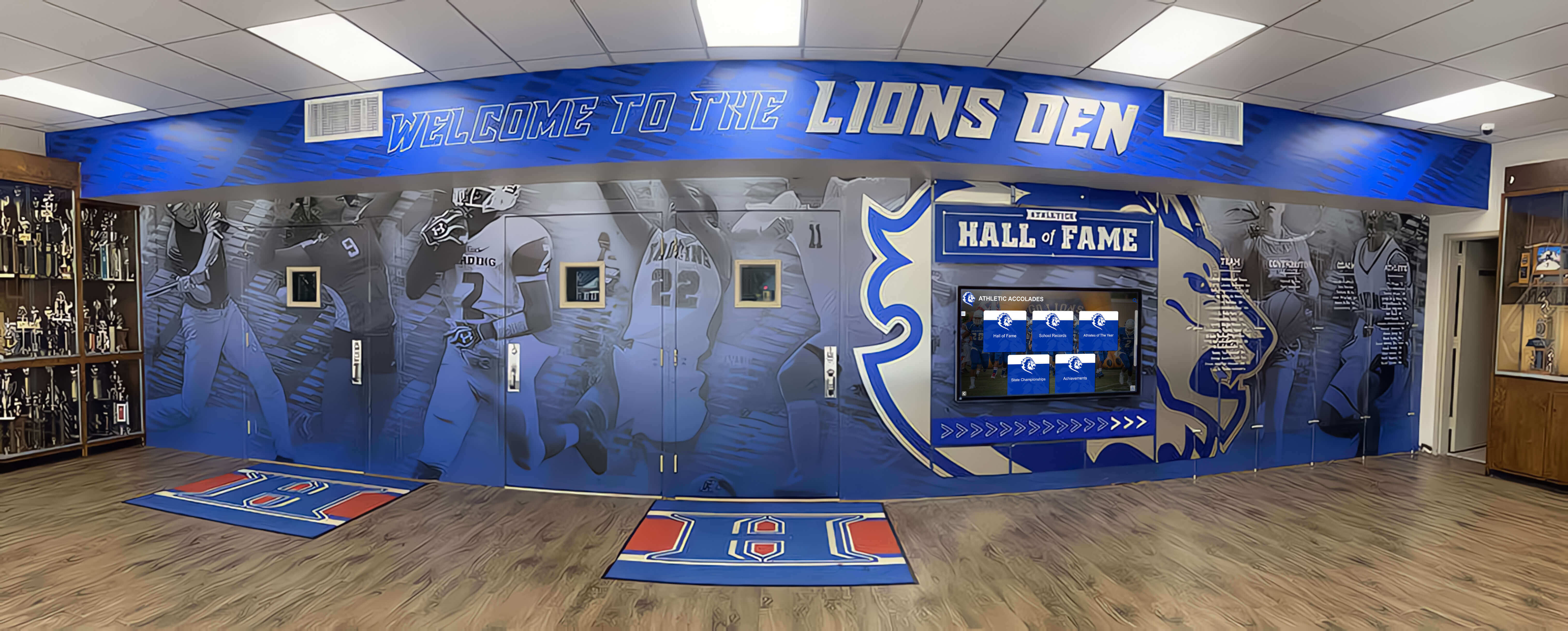
Alternative and Specialized Schools
Schools serving specific populations or educational models may need adapted recognition approaches.
Specialized school considerations include flexible scheduling accommodating non-traditional school structures, virtual/hybrid participation for distance or online learning students, credit integration when clubs align with competency-based learning, therapeutic integration for schools serving students with behavioral or emotional needs, and community partnerships essential for resource-limited alternative schools.
Future Trends in Club Recognition and Promotion
Understanding emerging trends helps schools make forward-looking investments while anticipating how club recognition will evolve.
Artificial Intelligence and Personalization
AI technologies will increasingly personalize club recommendations and automate recognition processes.
Emerging capabilities include intelligent matching suggesting clubs based on student interests, skills, and goals; automated content generation drafting club descriptions and updates; personalized recommendation engines showing students clubs they’ll most likely enjoy; natural language processing enabling conversational club discovery; and predictive analytics identifying students likely to benefit from targeted club recruitment.
Enhanced Measurement and Analytics
Data capabilities will reveal increasingly sophisticated insights about club participation and impact.
Advanced analytics will provide participation pattern analysis revealing temporal and demographic trends, retention prediction identifying at-risk club members before they disengage, impact attribution connecting club participation to academic and social outcomes, comparative analysis benchmarking performance across clubs and schools, and recommendation optimization testing which recognition approaches most effectively drive participation.
Immersive Club Experiences
Extended reality technologies will enable prospective members to virtually experience clubs before joining.
Immersive technologies include virtual reality club visits allowing students to attend meetings virtually, augmented reality displays overlaying club information on physical spaces, 360-degree photography creating immersive documentation of events, virtual mentorship connecting students with alumni who participated in clubs, and gamified exploration encouraging discovery through challenges and rewards.
Portable Digital Credentials
Club participation will increasingly connect to verified digital credentials students carry beyond high school.
Credential evolution includes blockchain-verified participation documentation, comprehensive skill portfolios demonstrating competencies developed, micro-credentials recognizing specific achievements within clubs, employer-valued certifications connecting club experience to career readiness, and college application integration streamlining documentation for admissions.
Schools implementing forward-looking digital recognition infrastructure position themselves to adopt emerging capabilities as they mature while avoiding obsolete investments in outdated approaches.
Implementing Comprehensive Club Recognition Programs
Schools ready to enhance club recognition should follow systematic approaches ensuring effective launch and sustainable operations.
Planning and Needs Assessment
Strategic planning ensures recognition aligns with institutional goals while addressing actual rather than assumed challenges.
Stakeholder Input
Gather perspectives from diverse constituencies including student surveys about club awareness and interest, club advisor feedback about recruitment and retention challenges, administrator priorities balancing clubs with academic goals, parent input about communication preferences, and community partner insights about collaboration opportunities.
Current State Assessment
Understand existing recognition before designing improvements. Assessment includes club inventory documenting all active clubs and their characteristics, participation analysis revealing trends and gaps, recognition audit evaluating current promotion efforts, technology review assessing available platforms and capabilities, and resource inventory identifying budget, staff, and physical assets available.
Goal Definition
Establish clear objectives driving implementation. Common goals include increasing overall club participation rates, improving diversity of participation across student populations, enhancing club quality and student experience, strengthening community awareness and support, and measuring club impact on student outcomes.
Platform Selection and Implementation
Choosing appropriate technology determines long-term success and sustainability.
Platform Evaluation Criteria
Assess options against critical requirements including content management ease for non-technical users, scalability accommodating growth, multimedia capabilities supporting rich storytelling, search and discovery functionality, mobile optimization, analytics and reporting, integration capabilities with existing systems, support and training quality, total cost of ownership including ongoing expenses, and vendor stability and roadmap.
Solutions like Rocket Alumni Solutions provide purpose-built recognition platforms designed specifically for educational institutions, offering functionality that generic digital signage or website builders cannot match while providing dedicated support ensuring long-term success.
Implementation Process
Systematic rollout prevents overwhelming staff while building momentum. Implementation phases include pilot testing with selected clubs refining processes before full launch, advisor training ensuring all staff can manage content, content migration transferring existing information to new platforms, promotion campaigns building awareness among students, feedback collection identifying early issues requiring adjustment, and gradual feature adoption introducing advanced capabilities as users master basics.
Sustainability Planning
Initial enthusiasm often fades without intentional sustainability strategies.
Ongoing Operations
Sustainable recognition requires establishing clear responsibilities assigning content management duties, regular review cycles maintaining information accuracy, continuous improvement processes incorporating feedback and new ideas, staff transition planning ensuring knowledge transfer when personnel change, and budget allocation securing funding for maintenance and enhancement.
Community Building
Recognition efforts succeed when supported by engaged communities. Community development includes club advisor networking creating mutual support, student ambassador programs distributing workload and building ownership, parent volunteer opportunities expanding capacity, alumni engagement connecting graduates to current clubs, and community partnership leveraging external resources and expertise.
Innovation and Adaptation
Prevent stagnation through ongoing evolution. Improvement strategies include trend monitoring staying current with emerging practices, pilot programs testing new approaches before full implementation, student voice ensuring recognition evolves with youth culture, data-driven decisions using analytics to guide improvements, and celebration of success recognizing and sharing recognition program achievements.
Conclusion: Building Vibrant Club Communities Through Strategic Recognition
How schools highlight and promote clubs fundamentally shapes student engagement, school culture, and the richness of educational experiences beyond traditional academics. Effective club recognition transforms hidden opportunities into visible, valued pathways where all students find belonging, discover passions, develop skills, and build lasting friendships that define memorable high school experiences.
Digital recognition solutions provide schools with unprecedented capabilities to showcase clubs comprehensively, celebrate achievements prominently, recruit members effectively, and build sustainable club cultures that genuinely thrive. When thoughtfully implemented with systematic approaches balancing technology and human connection, digital promotion strategies overcome traditional limitations of space, time, and reach that constrained previous recognition efforts.
Schools that invest strategically in club recognition reap substantial benefits: increased club participation creating more engaged student bodies, improved retention as students develop connections and reasons to remain enrolled, enhanced school culture through visible student activity and achievement, stronger college applications showcasing meaningful extracurricular involvement, alumni networks built on shared club experiences, and most importantly, students who discover interests, develop skills, and build relationships that shape trajectories long after graduation.
Core Principles for Club Recognition Success:
- Create comprehensive visibility ensuring all clubs receive promotion regardless of size or status
- Maintain current, accurate information through distributed responsibility and regular updates
- Celebrate achievements prominently demonstrating that clubs accomplish meaningful things
- Leverage technology strategically to overcome traditional recognition limitations
- Target recruitment at key decision points when students seek new opportunities
- Remove barriers systematically to ensure equitable access across student populations
- Measure effectiveness rigorously using both quantitative metrics and qualitative feedback
- Sustain commitment long-term through systematic processes rather than individual heroics
- Involve students authentically in content creation and recognition management
- Connect club experience to broader goals including college readiness and career preparation
Ready to transform how your school highlights clubs and builds student engagement? Modern recognition solutions like Rocket Alumni Solutions provide comprehensive platforms combining unlimited capacity for club showcase, engaging multimedia storytelling, intuitive management enabling distributed content creation, mobile accessibility reaching students everywhere, and dedicated support helping schools create club cultures where every student finds their place while achieving meaningful things together.
